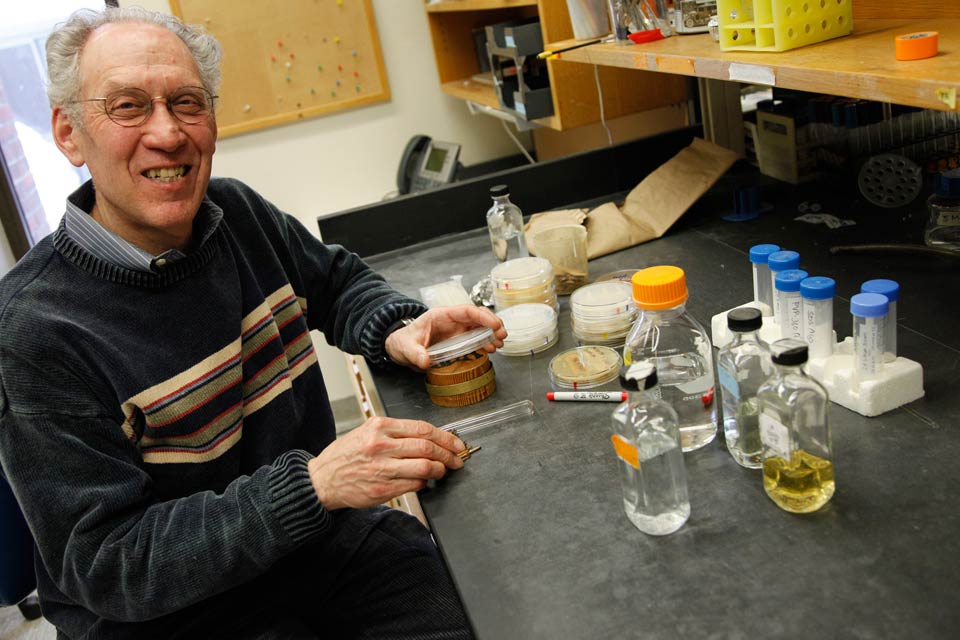Breaking Down the Mysteries of DNA Repair

February 3, 2017
By Lawrence Goodman | BrandeisNOW
On any given day, our DNA takes a lot of damage. In a single cell, as many as 10,000 errors or lesions in our chromosomes can arise in the course of 24 hours. Most are accurately repaired, so the cell is unaffected, but some result in permanent errors (mutations or chromosome rearrangements) that lead to diseases, including cancer.
For nearly three decades, Abraham and Etta Goodman Professor of Biology James Haber has studied DNA repair, the processes whereby insults to our genetic code are corrected. In the cover story of the February 2 issue of Molecular Cell, he and his students Anuja Mehta and Annette Beach offer new insights into the mechanisms of DNA repair that go awry in cancer cells.
Haber's lab research focused on double-strand breaks (DSB), a particularly hazardous form of DNA damage where both strands in the double helix are severed. In certain types of cancers, the repair process for DSBs go awry. Mutations are introduced into the genetic code that cause cells to become tumorous. "Our job is to understand what exactly is going on in the repair process and how exactly it can go wrong," says Haber, who is also the director of the Rosenstiel Basic Medical Sciences Research Center.
Among Haber and his team's findings:
-
They determined the minimum amount of homologous DNA sequence necessary for a specific repair process known as homologous recombination to occur. In this process, the cell attempts to repair damaged DNA by locating and copying a donor sequence, a nearly identical copy that is used to patch up the broken chromosome.
-
A highly efficient homologous recombination process known as "gene conversion” fails when the length of the homologous DNA donor sequence on one side of the break is reduced below a certain threshold. Instead, a usually less efficient and potentially more harmful repair process, known as break-induced replication (BIR) takes place. If BIR is prohibited by mutating genes that are specifically required for BIR, the cell switches back to gene conversion. This switch back to gene conversion had previously been thought to be unlikely.
The research was supported by NIH grants GM20056 and GM76020.






